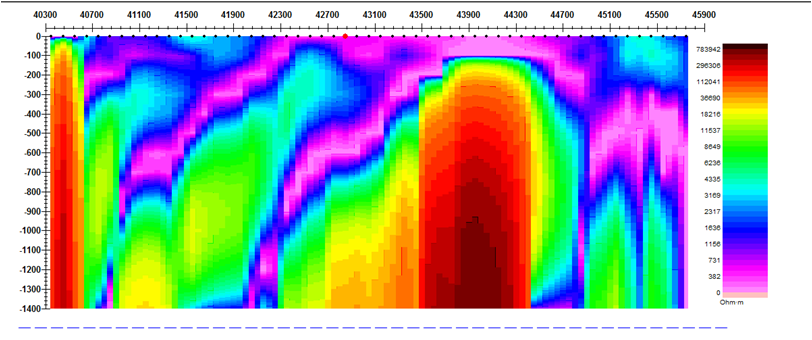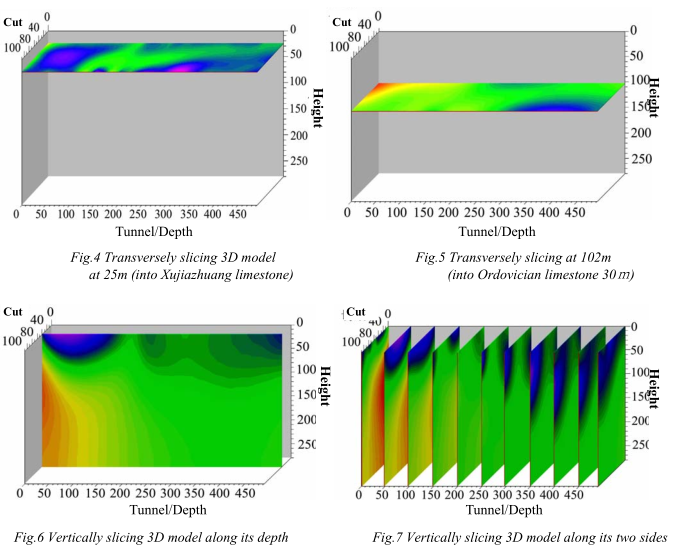

Yellow areas have chargeability values of greater than 35 mV/V, while red areas have chargeability values of greater than 45 mV/V (White et al. (b) The IP model obtained from the inversion of the Copper Hill survey data set. (a) Electrodes layout used for the 3-D survey of the Copper Hill area. Example of a 3-D survey using the offset pole-dipole array. On a more modern 2.4 GHz Core 2 Duo computer, this takes less than 1 day. As an example, a data set with nearly 65000 data points and 32000 model cells was inverted on a 2Ghz P4 computer in slightly less than 2 days. When used together with a data compression technique, it enables the inversion of very large data sets with over 20000 data points and model cells. To handle very large data sets, the program also supports the incomplete Gauss-Newton optimisation method. A robust data inversion option is also available to reduce the effect of noisy data points. Two different variations of the smoothness constrained least-squares method are provided one optimised for areas where the subsurface resistivity varies in a smooth manner (as in many hydogeological problems), and another optimised for areas with sharp boundaries (such as massive ore bodies).
#3d resistivity inversion software piracy Pc
The inversion of a data set with 198 electrode positions (BLOCKS_22x9-ws.dat example data file) just takes about 17 seconds on a PC with a hex-core i7 CPU. On a modern multi-core Windows-based microcomputer, the data inversion takes from less than a minute for small surveys with 100 electrodes in a flat area to several hours for extremely large surveys with 6000 electrodes in rugged terrain. However, the parameters which affects the inversion process can be modified by the user.

The program will automatically choose the optimum inversion parameters for a particular data set. Topographic effects can be modelled by using a distorted finite-element grid such that the surface of the grid matches the topography. On a modern Pentium 4 based microcomputer, the data inversion takes less than a minute for small surveys with 100 electrodes in a flat area, to a day for extremely large surveys with 6000 electrodes in rugged terrain. It supports parallel calculations that significantly reduces the inversion time. A Pentium 4 (or compatible CPU) based microcomputer with at least 512 megabytes RAM and an 80 gigabyte hard-disk is recommended. Like RES2DINV, it is completely automatic and the user does not even have to supply a starting model. The RES3DINV program uses the smoothness-constrained least-squares inversion technique to produce a 3D model of the subsurface from the apparent resistivity data alone. The arrays supported include the pole-pole, pole-dipole, inline dipole-dipole, equatorial dipole-dipole and Wenner-Schlumberger. For the inversion process using the IPI2WIN 2000 software. 3D forward algorithms based on the finite. This program is designed to invert data collected with a rectangular grid of electrodes.ĭeveloped to perform 3D resistivity modelling and inversion. In areas with complex structures, there is no substitute for a fully 3D survey. The main limitation of such surveys is probably the assumption of a 2D structure. Supports exact and approximate least-squares optimisation methods Supports smooth and sharp constrasts inversions Supports up to 5041 electrodes and 67500 data points on computers with 1GB RAM Supports trapezoidal survey grids Supports parallel calculations on Pentium 4 (and compatible) based computers Multi-core support with RES3DINVx32, 128GB memory support with RES3DINV圆4 In areas where the geological structures are approximately two-dimensional (2D), conventional 2D electrical imaging surveys have been successfully used. Now available as a combined package together with RES2DINV, the 2D Resistivity & IP inversion program.
#3d resistivity inversion software piracy windows
Create 3D models of subsurface resistivity or IP! For Windows XP/Vista/7 (available for 32- and 64-bit PCs.) 3D surveys for pole-pole, pole-dipole, dipole-dipole, rectangular, trapezoid, Wenner, Wenner-Schlumberger,and non-conventional arrays.


 0 kommentar(er)
0 kommentar(er)
